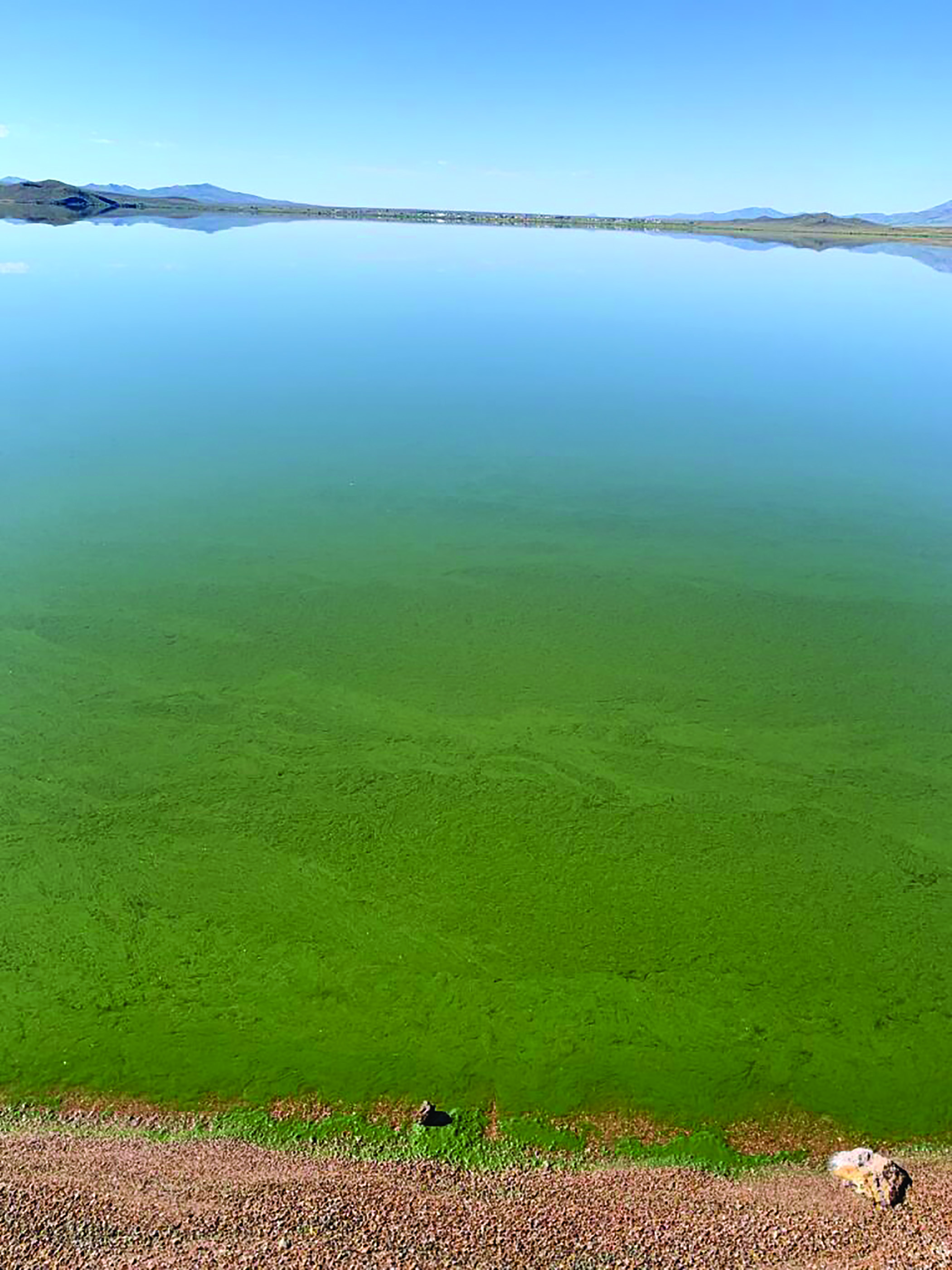Harmful algae, also called blue-green algae, can look like pea soup, paint, or grass clippings on the surface of water, as seen here at the Lahontan Reservoir.
RENO, NV — With summer temperatures rising, Nevadans are heading to the state's lakes and reservoirs for recreation and relief from the heat. However, state officials are issuing warnings about the increasing presence of harmful algae in these water bodies.
Harmful algae, predominantly caused by cyanobacteria, generate toxins that can pose serious health risks to humans, pets, and aquatic life. Weston Fettgather, an environmental scientist with the Nevada Division of Environmental Protection, highlighted the importance of being able to identify these hazardous algae.
"One method is the stick test," Fettgather commented to KUNR. "Drag a stick through the algae. If it’s long and stringy, it's likely green algae and non-toxic. But if it coats the stick like green paint, it could be cyanobacteria."
These harmful algae typically thrive in stagnant, warm water, often giving the water a pea soup-like appearance or a rotten smell. Exposure to or ingestion of the toxins produced by these algae can lead to symptoms such as nausea, vomiting, and skin irritation or rash.

There has been a report of a possible HAB at Wild Horse Reservoir, as well as South Fork, Lahonton and Washoe Lake. The public, including pets, are advised not to swim or enter the water.
Pets, especially dogs, are at heightened risk due to their tendency to ingest water while swimming. "If you see green scum or anything suspicious, keep your dogs out of the water," Fettgather advised.
To address this growing concern, the Nevada Harmful Algal Bloom Task Force has been established to educate the public on recognizing and avoiding these dangerous algae. The task force recommends checking their newly launched harmful algae dashboard for the most current updates before visiting any body of water.
Suspicious algae sightings should be reported by emailing wfettgather@ndep.nv.gov along with a photo to aid in monitoring efforts.
As summer continues, staying informed and vigilant is essential to ensure the safety of both people and pets while enjoying Nevada’s lakes and reservoirs.